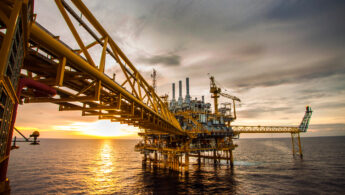Bullish Asian gas demand forecasts eroded by renewable surge
Increased momentum in the energy transition has led the IEA to reduce its gas demand forecast for 2040 by 1,500…

Azerbaijan is the world’s 28th-largest oil and gas producer, with production of around one million barrels of oil equivalent per day in 2023. The country holds around 0.4% of global oil reserves. In March 2024, Samir Nuriyev, Chairman of the COP29 Organizing Committee, called for a fair approach for countries with large oil and gas sectors.
The state oil company SOCAR is involved in expanding exports to Europe (see below) and has been expanding its operations alongside global majors. Deals in 2023 include:
In March 2024, SOCAR signed an agreement with Russian firm Tatneft on oil extraction and petrochemicals development as well as a deal with Kazakhstan’s national oil company KazMunayGas to increase shipments of oil across Azerbaijan towards Turkey and Europe, and to partner on geological exploration in Kazakhstan.
Between 2000 and 2021 natural gas supply grew by 128%. During the next ten years the country is planning on expanding its gas production from around 37 billion cubic metres (bcm) to 49 bcm in 2033. Oil and gas make up 98% of total energy supply, over 90% of exports and one-third of GDP. Gas exports increased by 29,290% between 2006-2021.
The country’s economic reliance on gas is not without risks. The World Bank warned in a recent report that “Azerbaijan’s development trajectory remains exposed to global energy markets’ volatility” and that the country will not be able to achieve strategic priorities outlined in Azerbaijan Vision 2030 if it remains reliant on oil and gas rents. The World Bank concludes: “Remaining prey to commodity cycles and facing a depleting oil asset base, Azerbaijan’s economy will be tested by the headwinds brought by global decarbonization”.
Europe is a key export market. Energy ministry data shows exports of natural gas reached 22.3 bcm in 2022, of which around 11.4 bcm went to the EU. In 2023 exports to the EU reached 12 bcm out of a total 23.9 bcm.
Russia’s invasion of Ukraine increased the EU’s goal of finding alternative sources of energy supply. In 2022 the EU and Azerbaijan signed an agreement to increase exports of natural gas to 20 bcm a year by 2027. Azerbaijan is currently importing Russian gas for domestic use to enable it to meet its export commitments, but this policy is likely to come under greater scrutiny from European policymakers in future.
In March 2024 the EU and Azerbaijan reaffirmed their commitment to work together to develop the infrastructure required to increase gas exports through what is known as the Southern Gas Corridor. Analysts conclude that significant investment will be needed to develop new gas fields and upgrade infrastructure to enable larger export volumes.
Current plans are for the 10-bcm capacity Trans Adriatic Pipeline running between Greece and Italy to increase its flows by 1.2 bcm per year from 2026. There are also plans to build an electricity cable under the Black Sea to enable Azerbaijan to export electricity to Europe.
Azerbaijan’s Nationally Determined Contribution, submitted to the UNFCCC three years late in 2023, states the aim to reduce greenhouse gas emissions by 40% by 2050 (using 1990 as the baseline reference year). The COP29 president said in March 2024 that the climate target could be strengthened and that the country aimed to maximise investment in green energy production.
Hydropower dominates the country’s renewable energy generation, with a capacity of more than 1300 MW. However, its long-term role could be affected by increasing water scarcity due to climate change. Government statistics show wind capacity is 66 MW, solar energy 282 MW and bioenergy 38 MW. In 2021 hydro, solar, wind and biofuels made up 1.4% of national energy supply.
New capacity is being developed. In 2022 construction began on a 240-MW wind farm with Saudi Arabia’s ACWA Power, and on a 230-MW solar power plant with the UAE’s Masdar. In 2023 implementation agreements were signed with ACWA Power on a 1.5-GW wind power project, a 1-GW onshore solar power plant and on energy storage systems. SOCAR is a partner in these projects.
The government has plans to turn Nagorno-Karabakh, the area it took full control over in September 2023, into a green energy zone with solar, wind and hydro electric power projects in development.
One driver of the country’s push for renewables is to free up supply to increase gas exports to Europe. In November 2023, Azerbaijan’s deputy energy minister Samir Valiyev said: “By the end of 2027, wind and solar power plants with a capacity of 1,862 MW are planned to be put into operation, which frees up more than 1 bcm of gas”.

Increased momentum in the energy transition has led the IEA to reduce its gas demand forecast for 2040 by 1,500…

Although carbon capture and storage could help reduce emissions, most projects are connected to the production of more oil and…